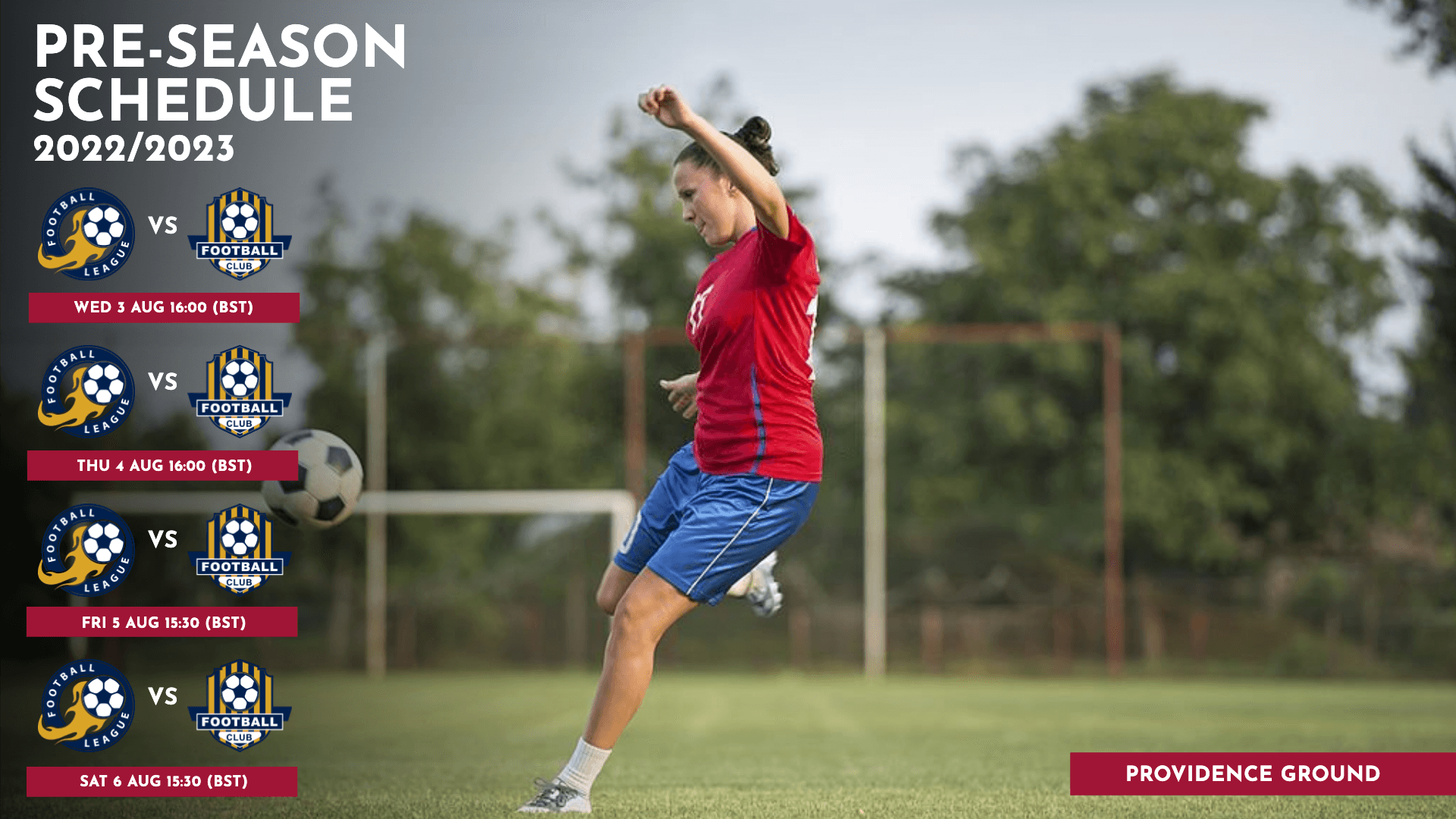Football Fixture Design: Creating Attractive Match Schedules
Creating Attractive Match Schedules

Why Fixture Design Matters
Football fixtures set the tone for the season, influencing attendance, player performance, and fan engagement. Poorly organized schedules can lead to logistical headaches, player fatigue, and fan dissatisfaction. On the other hand, a thoughtfully designed fixture list can:
- Boost attendance by scheduling key matches at prime times.
- Ensure fairness by evenly distributing home and away games.
- Maintain competitive balance across teams.
- Enhance viewer experience for televised matches.
By understanding the importance of these elements, organizers can deliver a seamless Football Fixture Design season that satisfies all stakeholders.
Kickly: Simplifying Sports Graphics

In the realm of football, creating engaging visual content is as important as scheduling matches. Kickly, an online application, offers a solution for sports clubs and organizations looking to streamline their graphic design needs. With over 600 customizable templates, users can effortlessly create professional-quality visuals for match announcements, lineups, scores, and player statistics.
Kickly stands out for its user-friendly interface and quick turnaround, enabling users to produce graphics in just 2-4 minutes. This efficiency saves time and resources, particularly for smaller clubs that lack the budget for professional designers. Trusted by clients worldwide, including Summit Soccer and Philadelphia Lone Star, Kickly has become a valuable asset for enhancing fan engagement through polished visual content.
Key Factors in Designing Football Fixtures
1. Balancing Home and Away Games
One of the primary goals in fixture design is to alternate home and away games fairly among teams. Uneven distribution can disadvantage clubs, either overburdening them with travel or depriving them of consistent home support.
2. Scheduling for Audience Engagement
Timing is everything when it comes to maximizing fan engagement. Weekend slots, evening kick-offs, and holidays often attract larger crowds. Fixture planners must align match times with audience preferences, considering the global appeal of football and time zones for international fans.
3. Avoiding Fixture Congestion
Fixture congestion can lead to player fatigue and impact performance. Organizers must ensure adequate rest periods between games while accounting for international tournaments, cup matches, and league schedules.
4. Local Considerations
Local events, weather patterns, and even rivalries influence fixture planning. For instance, scheduling derbies during festive periods can amplify excitement, while avoiding clashing with major events ensures better fan turnout.
5. Broadcasting Rights and Revenue
Television and streaming platforms have become integral to modern football, influencing fixture timings to cater to global audiences. Aligning schedules with broadcasters’ needs can enhance revenue while providing fans worldwide access to their favorite games.
Tools and Technology in Fixture Planning
Advancements in technology have streamlined fixture design, reducing human error and improving efficiency. Various tools and software help organizers manage the complexities of creating match schedules:
- Scheduling Algorithms: These use mathematical models to distribute matches fairly across teams.
- Data Analysis Tools: By analyzing historical data, these tools predict potential outcomes, helping to optimize schedules for competitiveness.
- Fan Engagement Platforms: These tools gauge fan preferences, ensuring match times cater to the largest possible audience.
The Role of Creativity in Fixture Design
While logistics are vital, creativity adds an exciting dimension to fixture planning. Planners can incorporate thematic matchdays, like charity events or rivalry weekends, to build anticipation. Special opening or closing fixtures, featuring marquee teams, further elevate the league’s profile.
Tips for Enhancing Fixture Appeal:
- Highlight Key Matchups: Ensure high-profile games occur at opportune moments in the season.
- Thematic Matchdays: Integrate community or historical themes to add significance.
- Flexible Scheduling: Leave room for adjustments based on unforeseen circumstances like weather disruptions.
Challenges in Fixture Design
Despite careful planning, fixture design comes with its share of challenges:
- Unpredictable Events: Weather disruptions, stadium availability, or public emergencies can derail schedules.
- Balancing Stakeholder Interests: Clubs, broadcasters, and fans all have differing priorities.
- Travel Constraints: For international tournaments, extensive travel requirements may complicate scheduling.
Addressing these issues requires adaptability and proactive communication among stakeholders.
Conclusion: The Art and Science of Fixture Design
Designing football fixtures is a complex task that blends art and science. From balancing logistical requirements to enhancing fan experiences, every decision impacts the success of a season. Leveraging modern tools and platforms like Kickly not only simplifies associated tasks but also elevates the overall presentation of the sport. By focusing on fairness, creativity, and audience engagement, organizers can create schedules that resonate with fans and players alike. Whether you’re a professional league planner or a local club organizer, embracing innovative approaches will ensure your football season kicks off with success.








